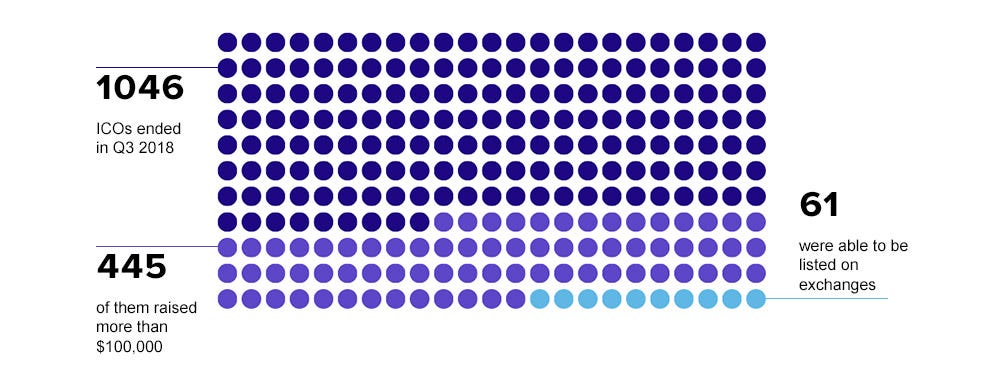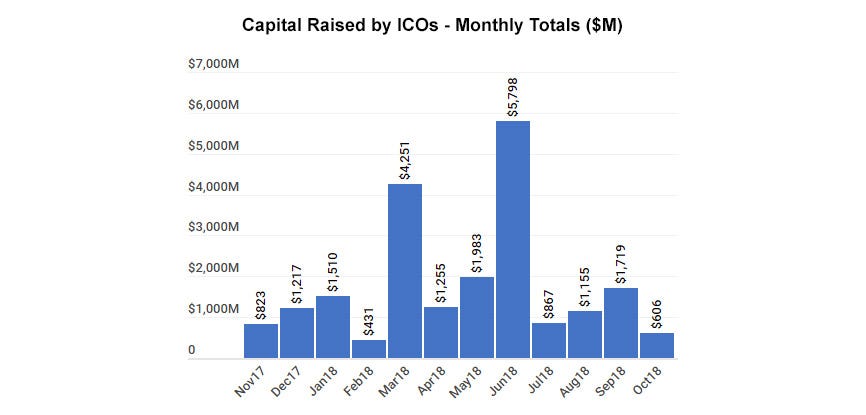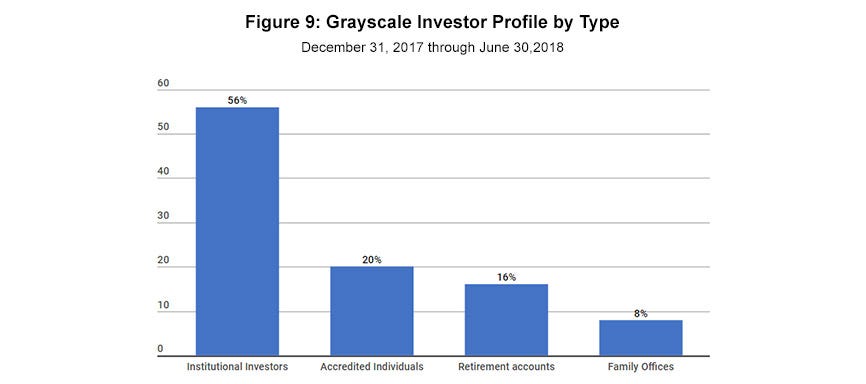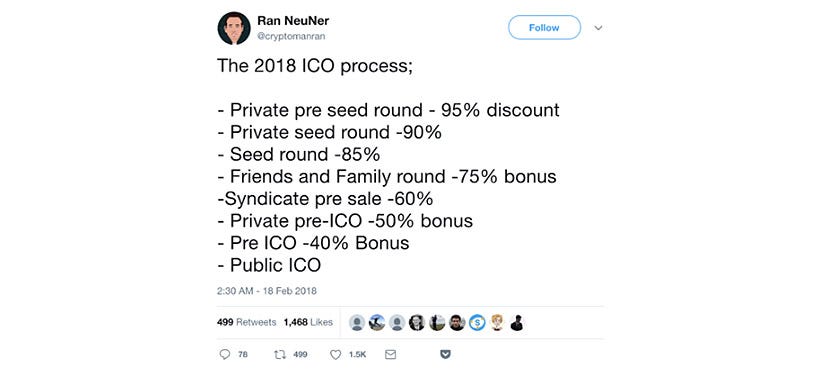Latest news about Bitcoin and all cryptocurrencies. Your daily crypto news habit.

As we near the end of 2018, one thing is becoming increasingly obvious — ICOs are slowly being taken away from the everyday crypto enthusiast. I’m not blaming regulations, that’s still up for debate, rather I’m referring to the switch of investment majority from retail to institutional.
According to a variety of reputable reports (Cryptovalley, Icorating, Tokendata, Grayscale), one can see that the trend currently sits at around 60% institutional investors and 40% retail, with the market shifting further towards institutional every quarter. With nearly 84% of the total funds being raised through private and presales, it should come as no surprise that the ICO marketing game is changing. So what does this mean for the average ICO trying to launch in today’s market? You can find what the ICO marketing plan looked like at the beginning of the year in this article.
Current PR Landscape
According to data at Coinschedule the average ICO raises about $17 million (excluding EOS+Telegram’s respective ICOs), but that number seems to be decreasing on average since the start of Q3.
Here is a look at five ICOs that were completed in October, 2018. These ICOs failed to reach $10 million in a market where the average is far higher than that; what happened to them? We’ll take a look at their total earnings, check out how much traffic their top SEO articles received (reflecting community enthusiasm towards them), investigate their bounty programs and Twitter accounts (reflects their ability to interact with community), and highlight what their declared market focus strategy is.
Here is the link to spreadsheet: https://docs.google.com/spreadsheets/d/1RxQVCROPRyNKdvyXShQiu7ES9jRJ-zSZ-cPp21Ddi3k/edit?usp=sharing
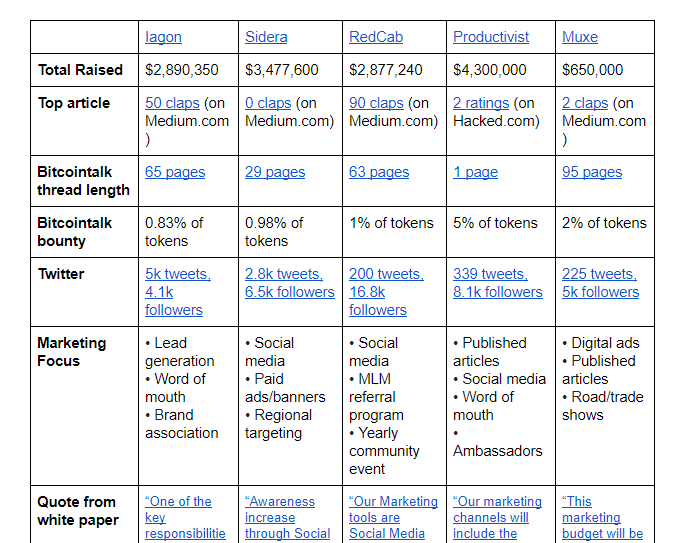 https://docs.google.com/spreadsheets/d/1RxQVCROPRyNKdvyXShQiu7ES9jRJ-zSZ-cPp21Ddi3k/edit?usp=sharing
https://docs.google.com/spreadsheets/d/1RxQVCROPRyNKdvyXShQiu7ES9jRJ-zSZ-cPp21Ddi3k/edit?usp=sharing
Retail vs. Institutional Investors
In essence, the term “retail investor” refers to any individual party investor, typically one who is investing a smaller amount (as opposed to $100,000+). Retail investors, therefore, refers to everyday investors and people who help keep the idea of crowdfunding alive. Retail investor marketing relies on the following tactics, because they synergize best with individual investors:
- Bounty programs (encourages community involvement/vetting)
- Word-of-mouth campaigns (people only spread it if they support it)
- Grassroots style campaigns (viral social media, articles, events, etc.)
- Telegram/Bitcointalk forums to establish credibility (community vetting)
On the other end of the spectrum is institutional investors, which are basically institutions/companies that are investing large sums of money. These types of investors are more common in IPOs (venture capitalists, angel investors, etc.), but they are quickly making their way into the ICO world. If ICOs want to target institutional investors they’ll need strategies that rely less on community involvement and more on attracting big money, such as:
- Contacting fund managers
- Listing their ICO on specific rating websites to draw presale/private sale attention
- Host a pre-sale/private sale for a small number of investors at a discounted rate
Some people believe that the influx of institutional investors into ICOs is killing the spirit of decentralization and causing ICOs to receive less funding. Is it possible that the shift from focusing on retail investors (40%) to institutional investors (60%) is at the root of the problem? Let’s hear what the actual companies have to say about the whole process, perhaps that will shed light on their marketing strategies and the problems they face…
Price Comparison of Services
Different ICOs have different needs, so we’ve researched and listed a collection of various services and tiers of pricing. These companies reflect a changing ICO market, once touching on a time when ICOs first became popular and had the excess funds to throw at marketing to now, a time when ICOs should be carefully selecting who they work with and how much they pay.
Boutique ICO Agencies
These are a bit outdated and were popular during the heyday of ICOs (late 2017 to early 2018) — they charge copious amounts of money, additional “success” fees on top of that, and offer a blanket solution that may have worked perfectly back when ICOs were all the hype and demand for services was high, but they may no longer serve the changing market. Although these companies are one-stop-shops, ICOs need to weigh the cost to benefits of using them. Some folks in the ICO market believe that these prices are far too high.
- ICObox — Basic package 40 BTC (~$250,000)
- Priority Token — Marketing package from $95,000+
- X10 — Standard package from $82,000
Average price: ~$100,000
Independent PR Firms
Marketing is key, and PR firms seem like the most obvious answer when seeking experienced marketers, but are they the best choice? These companies typically manage your community marketing, paid advertising, SEO, PR marketing, and social media.
- Palm Beach Marketing — 1–9 BTC ($6,000 — $57,000)
- Infinite Blocktech — Between $60,000 and $90,000 for most services, $200,000 for top tier
- Crowdcreate — Ranging from $5,000 and $175,000 depending on client needs (how many various services the client wants)
- List of the top 21 PR firms for further reading
Only you can decide if paying more is worth it for your ICO, given that plenty of lower cost options exist that provide the same services.
Average price: ~$50,000
Transparent full-service ICO agencies
For those who are seeking easy-to-understand pricing schedules (that are typically lower than the above categories) and the charm of working with a smaller/more intimate provider, this list is for you. These types of companies cater more towards lower earning ICOs, and given that the average earnings are shrinking, that makes these companies more attractive to a growing number of ICOs. These companies focus on specific tasks instead of being a “one-stop shop.” This attention to performing one task helps them provide a more personal touch.
- Howtotoken Agency — Services start around $450 (content creation) and go into the $2,500 range for more complicated services (such as smart contract development). Howtotoken is all about providing carefully curated work (emphasis on content, white paper creation, and brand curation) with a money-back guarantee, ensuring their customers are more than satisfied.
- Crowdcoinage — Being entirely focused on one task, creating and sustaining a functioning ICO, Crowdcoinage has a crystal clear pricing scheme with two options. Flatrate — $70,000, and Pay as you go — $4.65 per onboarded user.
- Coinlauncher — An ICO listing platform first and an ICO-centric service provider second (social media, advertising, community management, etc). Listing starts at 0.15 BTC (~$1,000) and climbs up to 0.75 BTC (~$5,000) for premium services.
Average price: ~$2,500
Freelancers
Looking to handpick individual talent for your project? Here’s the top three freelancing platforms for your convenience (rates dependent on the freelancer chosen). Remember that you’ll end up doing all the work that you don’t hire freelancers for and that results aren’t always guaranteed:
- Upwork — ~$50-$100 per hour
- Guru — ~$60 per hour
- Fiverr — Prices vary heavily depending on the “gig”
Average price: ~$2,000
Important Take Away
Launching an ICO is expensive these days, especially when using premium services, and given that the majority of ICOs fail, companies can’t afford to frivolously squander money. Different studies (Tokentarget, Artplusmarketing) found that ICOs are spending $300,000 — $500,000+ on average to launch, but if this were the key to success then why are so many failing?
ICO success is about having a great product, a clean presentation, and the ability to create excitement within the community, which are all tasks that can be accomplished by using transparent, fair-priced services. We’re past the era of giant ICOs throwing huge amounts of money at ICO agencies in order to succeed, that trick doesn’t work anymore. Honestly, at the end of the day you have to ask yourself, “Did it even work back then?”
What Should your ICO Marketing Plan look like in Q4 2018? was originally published in Hacker Noon on Medium, where people are continuing the conversation by highlighting and responding to this story.
Disclaimer
The views and opinions expressed in this article are solely those of the authors and do not reflect the views of Bitcoin Insider. Every investment and trading move involves risk - this is especially true for cryptocurrencies given their volatility. We strongly advise our readers to conduct their own research when making a decision.
